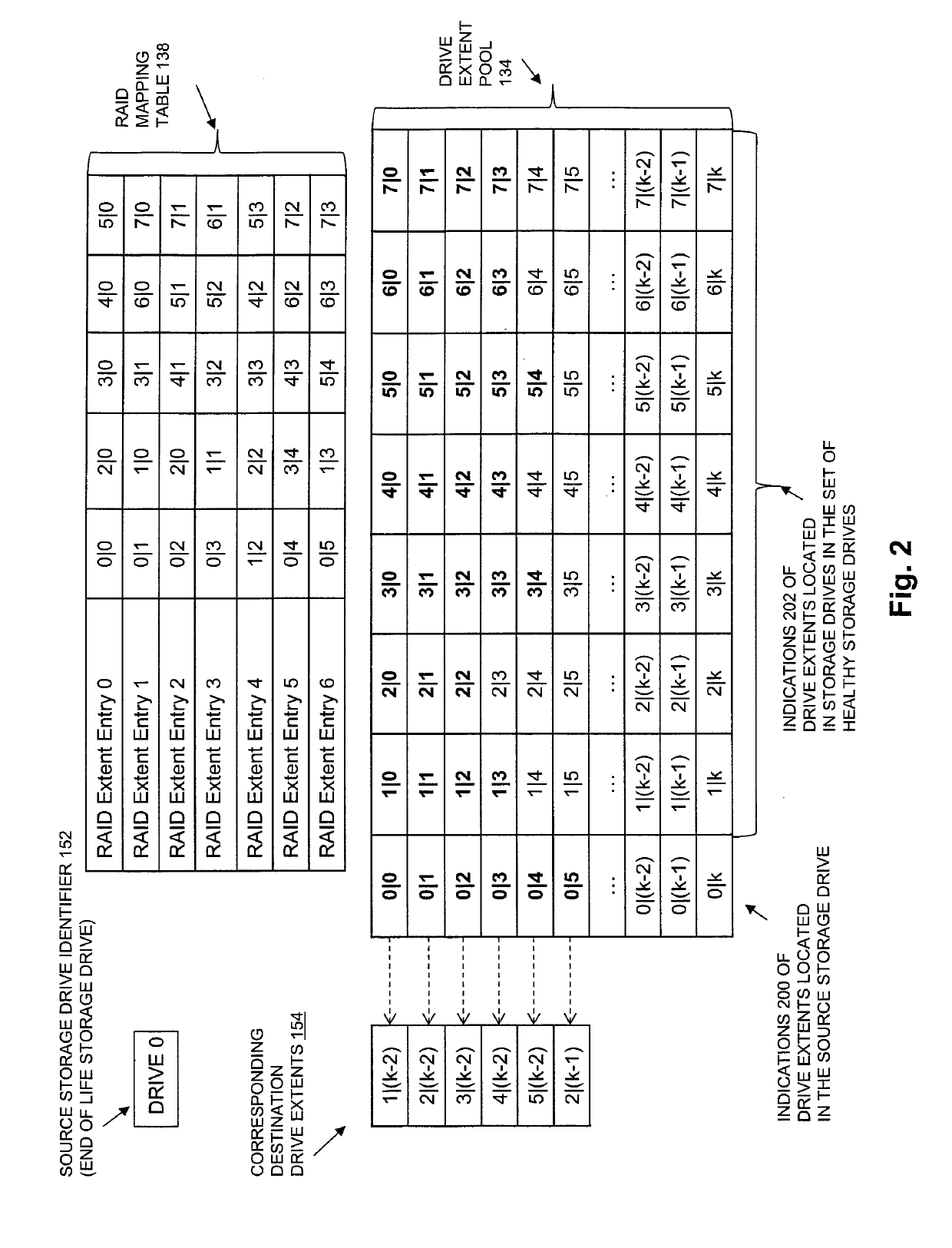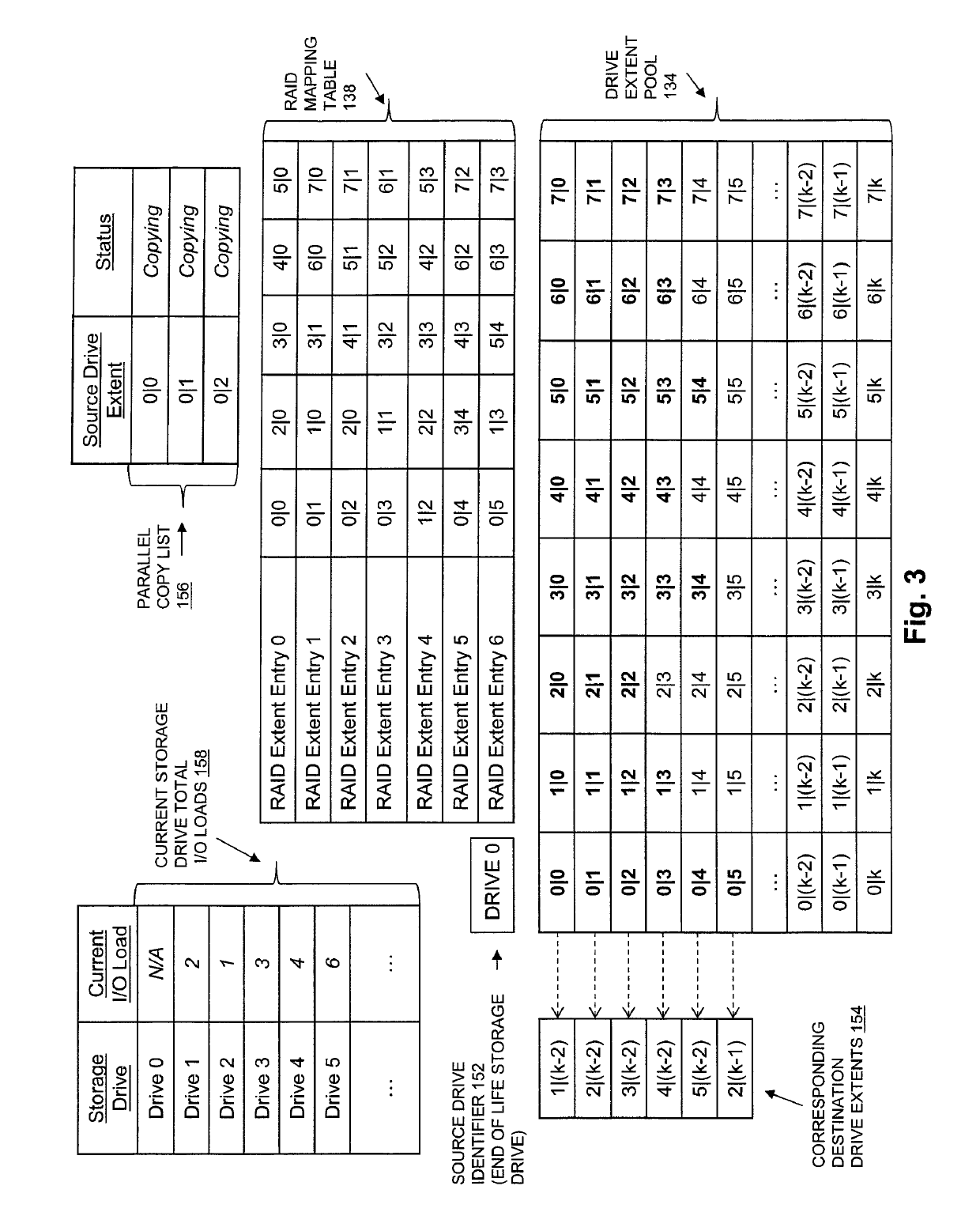Relocating data from an end of life storage drive based on storage drive loads in a data storage system using mapped RAID (redundant array of independent disks) technology
a data storage system and end of life technology, applied in the field of intelligent data storage systems, can solve the problems of the amount of time required to rebuild data, the inability to add new disks, and the significant limitations of the data storage system providing traditional raid data protection, so as to reduce the risk of performance bottlenecks, reduce overall copy time, and improve copy performance
- Summary
- Abstract
- Description
- Claims
- Application Information
AI Technical Summary
Benefits of technology
Problems solved by technology
Method used
Image
Examples
Embodiment Construction
[0032]Embodiments of the invention will now be described. It should be understood that the embodiments described herein are provided only as examples, in order to illustrate various features and principles of the disclosed technology, and that the invention is broader than the specific embodiments described herein.
[0033]FIG. 1 is a block diagram showing an operational environment for the disclosed technology, including an example of a data storage system in which the disclosed technology may be embodied. The operational environment of FIG. 1 includes some number of Host Computing Devices 110, referred to as “hosts” and shown for purposes of illustration by Hosts 110(1) through 110(N), that access data storage provided by Data Storage System 116, for example over one or more computer networks, such as a local area network (LAN), and / or a wide area network (WAN) such as the Internet, etc., shown in FIG. 1 by Network 114. Data Storage System 116 includes at least one Storage Processor ...
PUM
 Login to View More
Login to View More Abstract
Description
Claims
Application Information
 Login to View More
Login to View More - R&D
- Intellectual Property
- Life Sciences
- Materials
- Tech Scout
- Unparalleled Data Quality
- Higher Quality Content
- 60% Fewer Hallucinations
Browse by: Latest US Patents, China's latest patents, Technical Efficacy Thesaurus, Application Domain, Technology Topic, Popular Technical Reports.
© 2025 PatSnap. All rights reserved.Legal|Privacy policy|Modern Slavery Act Transparency Statement|Sitemap|About US| Contact US: help@patsnap.com



